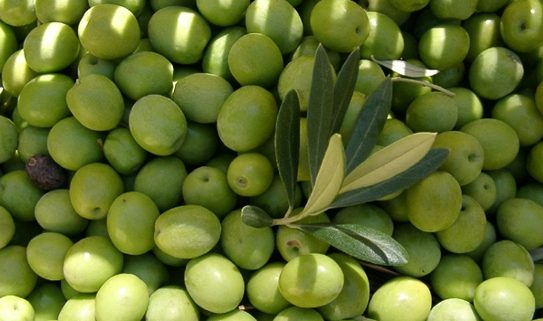Record low for the last 10 years in the table olive harvest
The Association of Young Farmers (ASAJA) in Seville alert the national table olive harvest 2016/2017 will beat a record, but on the downside, as it will be the lowest in the last decade, due to the lack of rain and prolonged hot. In fact, due to the absence of table olive, many farmers have stopped collecting awaiting the olive fruit ripens, because although rumpled and low-caliber olives are not suitable for marketing as table olive, they can be used for oil production.
Prolonged summer weather, along with the bad weather forecasts have led Technical Services ASAJA-Seville to adjust the capacity that was presented on September 12 at the XXXIV Technical Conference Table Olives, where it was advanced that production national table olive could reach 500.000 tons, a quantity which will be significantly reduced. In that sense, from ASAJA-Seville it is considered very difficult in this campaign even reach 460,000 tons, which would make it the worst harvest of table olives in the last 10 years.
High temperatures and no rain: since the beginning of the agricultural year, last Sept. 1st, the same trend is maintained. In the last month accumulated in the province of Sevilla rainfall they have ranged between 2.9 liters per square meter of Ecija and 7 of Moron, while in the same period last year had already collected 38 and 50 liters in Écija Moron.
The option that many farmers are opting to wait for the olives ripen to send a mill, is presented as a profitable exit in this crop year, which also has shorter and stable olive oil prices
Although the annual consumption of table olives is higher by 100.000 tons to the volumetric production, there should be no supply problems, since there is still a sufficient stock to meet the needs of domestic consumption and export marketing 2016/2017, but the link provided for the 2017/2018 campaign will be very tight.
Given a short campaign like this ASAJA-Seville recommends farmers not deliver their olives without price. This is a very harmful practice for the farmer and expressly prohibited by Law 12/2013 Improvement of the Food Chain. In a campaign with so little table olive it should be easier for the farmer to defend the product.
ASAJA-Seville recommends that olive growers deliver their olives in cooperatives that, given the lack of raw materials to meet its ability to entamado, they could also be picking olives from non cooperatives farmers
Campaign varieties
As for the analysis of the evolution of the campaign by variety, Technical Services ASAJA-Seville give virtually complete collection gordal olive, which has been reduced harvest, but not its size or quality, since olive trees this variety is grown mainly in irrigation. The olives of this variety, contrary to market logic, have suffered a price drop of 45% compared to last season, although the price of entamados of gordal remains and olive green similar varieties keeps its price level in the US (Gordal olive to 1.30 euros/kilo) and slightly lower -only 15%- in Greece (Halkidiki olives to 0.85 euros/kilo).
The collection campaign chamomile olive is at its Ecuador, although the lack of commercial size and good oil prices are leading many olive growers to stop collecting green to deliver their olives to mills. The set starting stock and short production maintain this variety below usual levels to supply markets.
Finally, regarding the Hojiblanca olive, the later variety and has the highest oil yield, it should now start its collection, however, and as noted from ASAJA-Seville, in these early days of October many unknowns remain on verdeable effectively harvest. Unknowns that bad weather and the good performance of the oil market are making sure to decant clear to olive mill by choice as a destination for olive hojiblanca this season.
Sevilla produces 70% of the table olive is collected in Spain, a country that produces 72% of the entire table olives of the European Union and one in four of all consumed in the world
Spain table olives are sold to 160 countries and represents 40% of the world market for table olives. 63% of all table olives produced in Spain is exported.
Source: ASAJA-Sevilla









